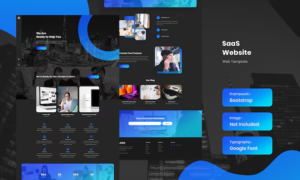Today, we’re thrilled to bring you an exclusive interview with Mickey Singh, a seasoned marketing analytics professional with over a decade of experience in the field. Mickey has worked with renowned brands such as Ancestry.com, Beachbody, and Affirm Inc, where he has been instrumental in optimizing marketing strategies and driving growth through data-driven insights. In this interview, Mickey shares his experiences in the rapidly evolving world of marketing analytics, his approach to overcoming challenges, and his thoughts on the future of the industry.
Mickey, it’s been over 10 years since you began your career in marketing analytics. How have you personally experienced the evolution of tools and techniques, and what drove these changes?
Over the years, I’ve witnessed an incredible transformation in marketing analytics tools and techniques. From my early days working as a business analyst to my current role as Marketing Analytics Manager, I’ve seen how tools like SQL, R, and various data visualization platforms have evolved to become more powerful and user-friendly. For example, SQL didn’t have window functions when I first started using it, but now I can’t imagine my life without them – they make my job so efficient and fast. And I believe the driving factors behind these changes have been the growing complexity of data sources and the increasing demand for actionable insights that drive business growth.
During your career, what personal challenges have you faced in marketing analytics? How did you overcome them, and what valuable lessons did you learn in the process?
One of the personal challenges I faced during my career was working at Ancestry, where I needed to develop a multi-touchpoint attribution solution to optimize digital marketing channels. This task required collaborating with various stakeholders, including data engineering, marketing teams, and external data providers. There was a knowledge gap between the teams regarding attribution solutions, such as the differences between MMM and MTA, why we needed both, and which solution addressed which specific problem. To overcome this, I focused on clear communication, fostered strong relationships with stakeholders, and took the initiative to educate myself and others on the latest attribution methodologies. This experience taught me the importance of teamwork and the value of staying up-to-date with industry best practices in marketing analytics.
Ensuring data quality is paramount in your work. Can you walk us through a situation where you had to address inconsistencies or anomalies in the data you analyze?
Ensuring data quality and accuracy has always been a priority for me. I adhere to strict data validation processes, regularly auditing data sources, and working closely with our data engineering teams to address any issues. For example, at Beachbody, I collaborated with data engineers to create automated data validation checks, significantly reducing the inconsistencies and anomalies we encountered. While at Ancestry, I built Tableau and Adobe Analytics reports to ensure the accuracy of the data used for marketing purposes.
Can you share a project where your marketing analytics insights led to a significant improvement in performance or ROI? What were the key takeaways from that experience?
A memorable project that comes to mind is when I worked at Ancestry. I collaborated with cross-functional teams to establish an analytics strategy for testing branded ads on Facebook (now Meta). In October 2019, we targeted a set of qualified user segments (which were defined by another successful project I had led) using branded ads. We then served these users with performance ads in November 2019, during Ancestry’s peak season. As a result, we observed a statistically significant reduction of 28% in Facebook’s cost per acquisition. This gave us a big opportunity to enhance our ROI on one of Ancestry’s most important digital marketing channels. Needless to say, this was a major victory for the team and we ended up rolling out this approach to other marketing channels as well.
How do you strike a balance between quantitative data and qualitative insights to create a comprehensive understanding of your target audience and their needs?
One of my critical responsibilities as a marketing analyst is understanding our target audience’s needs, and I’ve found that it’s essential to balance quantitative data with qualitative insights. Recently, I’ve been leading a project at Affirm where we’re trying to understand the impact of brand performance, as captured by panel-based surveys, on our business KPIs, such as sales and revenue. I’m exploring various correlation and regression-based modeling techniques to establish these relationships. I’m confident that the read-out will be exciting and insightful for the team!
Staying current with emerging marketing analytics trends and technologies is essential. How do you keep yourself up-to-date, and are there any specific sources or thought leaders you follow?
To stay up-to-date with emerging trends and technologies, I follow industry publications such as the Harvard Business Review and the journal of Marketing analytics. Recently, I started listening to the Marketing Analytics podcast by Supermetrics, which definitely provides valuable insights. I also follow industry leaders on LinkedIn, as it’s always great to learn from others’ experiences in the field and see how their insights can be applied to my job. Additionally, I often get invited to several VIP events and conferences. These events allow me to network with other professionals, gain new perspectives, and stay up-to-date with the latest industry trends and insights.
In your opinion, which soft skills have been most crucial for success in marketing analytics? How have you developed and honed these skills over time?
In my experience, effective communication, collaboration, and adaptability have been essential soft skills for success in marketing analytics. I’ve developed these skills by taking on leadership roles, working with cross-functional teams, and adapting to the ever-changing landscape of marketing analytics. It’s also a skill set that continues to evolve, and I remain patient with myself when making mistakes, as they are part of the learning process. Embracing challenges and fostering personal growth have proven invaluable in my professional journey!
Communicating complex marketing analytics insights to non-technical stakeholders can be challenging. How do you approach this task in an easily understandable and actionable manner?
Sure. I try to focus on simplifying the findings and presenting them in a visually appealing way. Using tools like Tableau, Looker, PowerPoint and sometimes even Excel, I create easily digestible charts and graphs that highlight key insights and trends. This approach allows my stakeholders to understand the results and make data-driven decisions. Additionally, I take the time to explain the underlying concepts and assumptions of the statistical models in layman’s terms, ensuring that everyone involved can appreciate the significance of the results and how they inform our decision-making process across the organization. While it can be challenging at times, I’ve grown to appreciate this aspect of my work as it helps improve my communication skills and foster a better understanding of complex analyses among team members.
I recently came across your TechTimes article on Predictive Marketing Analytics. I thoroughly enjoyed your insights on how predictive marketing analytics can enhance Customer Lifetime Value (CLV) and retention. It was truly enlightening. Based on your expert perspective, could you provide some practical advice for a company with limited resources that wants to leverage these insightful strategies?
Glad to hear you found it enlightening. To answer your question, even with limited resources, companies can use predictive analytics. Start by collecting customer data. Use it to understand when customers might buy again and send them timely marketing offers. If you see engagement dropping, that’s a sign they might leave – counteract with personalized outreach. Affordable tools like Google Analytics and online courses can make this process easier. Start small and learn as you go!
*You can follow this link to access Mickey Singh’s recent article titled, Embracing the Power of Predictive Marketing Analytics: Transforming Data into Actionable Insights
Lastly, if you could offer advice to your younger self as you began your career in marketing analytics, what would it be and why?
If I could advise my younger self to start a career in marketing analytics, I would say that it’s OK to make mistakes. It’s crucial to understand that making mistakes is a natural part of the learning process, and there’s no need to be too hard on yourself. What’s important is to learn from those experiences and use them as opportunities for growth and improvement. Adopting this mindset enables you to continuously develop your skills, adapt to new challenges, and stay ahead in the ever-evolving field. Embrace your mistakes, reflect on them, and use those lessons to become a stronger, more confident professional in the world of marketing analytics.
We’d like to extend our heartfelt thanks to Mickey Singh for taking the time to share his experiences and insights with us. His dedication to staying up-to-date with industry trends, cultivating strong relationships with stakeholders, and embracing personal growth is truly inspiring. As the field of marketing analytics continues to evolve, professionals like Mickey will undoubtedly play a pivotal role in shaping its future. We wish Mickey all the best in his ongoing journey, and we’re confident that his passion and expertise will continue to make a lasting impact on the industry.

































